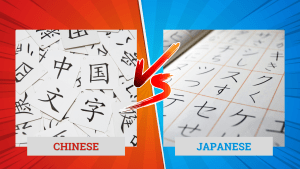Taiwanese Hokkien, a key language in Taiwan, reflects the island’s intricate socio-political landscape and rich heritage. Its distinctive features set it apart from other Chinese dialects.
As part of our ongoing series covering languages spoken in Taiwan, this article explores Taiwanese Hokkien’s origin and evolution, its linguistic traits and ongoing preservation efforts. We’ll also examine its current usage in the world of business with a view to helping corporations understand where and when it is appropriate to translate into Taiwanese Hokkien.
What is Taiwanese Hokkien?
Taiwanese Hokkien, also known as Tâi-gí, is a Southern Min dialect. Originating from Fujian province in China, it is spoken by approximately 70% of Taiwan’s population. This makes it one of the most widely used native languages in the country.
Historical Evolution and Cultural Significance
Historically, Taiwanese Hokkien has evolved through centuries of migration, colonial rule, and local influences. Spoken since the seventeenth century, it rose in prominence during the 19th and 20th centuries. Under Japanese occupation and subsequently during the rule of the Chinese Nationalist regime, the language faced suppression, leading to a significant decline in the number of speakers. Despite these challenges, Taiwanese Hokkien has witnessed a revival in recent decades. This resurgence has been fueled by cultural movements dedicated to preserving mother tongues and asserting Taiwanese identity.
Development and Divergence
Originating from the Southern Min region in China, the Hokkien language has evolved over centuries. Its development coincided with Middle Chinese and was influenced by interactions with migrating ethnic groups in Taiwan, including the Hakka and Indigenous people. The distinct geographical features of the Fujian province, such as its rugged terrain, contributed to the regional divergence of Southern Min languages. This in turn led to unique dialects evolving independently over time.
Table: Distinct Accents in Taiwanese Hokkien
| Accent | Region | Characteristics |
| Quanzhou (hái-kháu) | Coastal areas of Taiwan | Prevalent in areas with Quanzhou settlers |
| Zhangzhou (lāi-po͘) | Mountainous regions of Taiwan | Dominates in regions with Zhangzhou settlers |
With modern transportation and increased mobility, a linguistic blend known as Chiang–Chôan-lām has emerged, featuring a mix of Quanzhou and Zhangzhou dialects. The Ministry of Education’s online dictionary denotes pronunciation and lexical variations across eight Taiwanese regions, reflecting further linguistic divergence within Taiwanese Hokkien.
Modern Times
In contemporary Taiwan, the language is experiencing a resurgence among younger generations as a medium to express a renewed national identity distinct from the Chinese Nationalist Party’s historical influence. This revival gained momentum following the end of Martial Law in Taiwan, which sparked renewed enthusiasm for preserving both the Taiwanese Hokkien language and traditional culture through civil activism.
At the same time, the landscape of Taiwanese media has transformed dramatically. Evolving from low-budget productions to more sophisticated cultural narratives featured on platforms like Netflix. There’s also been a noticeable shift towards greater acceptance and popularity of the Taiwanese language in everyday life – demonstrated by the rise of musical groups, television shows and Taiwanese marketing efforts that incorporate Taiwanese Hokkien.
Since 2001, Taiwanese schools have also incorporated the teaching of Taiwanese Hokkien, Hakka, and indigenous languages. Further recognizing the cultural importance of these languages in education. Fast forward to 2025 and Taiwan actively positions itself as a cultural hub for Hokkien, nurturing literature and poetry in the Taiwanese language and aspiring to become a major exporter of Hokkien culture worldwide.
Linguistic Features and Dialects
Taiwanese Hokkien is a rich and complex language with significant historical roots. Due to the aforementioned historical migration and cultural exchanges, the language has developed many unique linguistic features as well as a diverse series of sub-dialects.
Linguistic Comparisons Between Taiwanese Hokkien and Mandarin
Taiwanese Hokkien and Mandarin, although related, have followed different evolutionary paths leading to significant linguistic divergence. Despite sharing some vocabulary and grammatical structures, they are largely incomprehensible to speakers of one another. A key factor in this divergence is the writing system of Taiwanese Hokkien, which employs both Traditional Mandarin characters and unique dialect characters. This can be challenging for native Mandarin speakers.
Additionally, there are notable discrepancies between the two languages, such as the word 走, meaning “to run” in Taiwanese Hokkien but translating to “to walk” in Mandarin. Pronouns also differ, with distinctions not present in Mandarin, exemplified by the use of guán (阮) for exclusive “we” and lán (咱) for inclusive “we.”
Diverse Set of Finals
Taiwanese Hokkien is characterized by its diverse set of finals, which include unique phonetic elements like plosive and nasal finals, as well as nasalization of the coda and the glottal stop. These distinctive features give the language a richer acoustic palette compared to Mandarin Chinese, contributing to its phonetic complexity.
Five Tonal Contours
The tonal system in Taiwanese Hokkien is intricate, featuring five tonal contours that surpass Mandarin in tonal diversity. Traditionally, eight tones are identified, including tones for stopped syllables, enabling a vast range of syllables. Tones in Taiwanese Hokkien are categorized into citation tones, used when syllables stand alone, and changed tones for different contexts. These tonal changes can be complex, involving normal modifications and changes for emphasis, especially with triplicated adjectives. Some changes rely on final consonants, while others occur independently.
Over time, colloquial writing systems for Hokkien have been developed, allowing people to communicate through written forms using Chinese characters, Latin characters, or tone marks, including the representation of the eighth tones. This adaptation facilitates broader and more enduring communication across generations and within communities.
Regional variations within Taiwan
The accents of Taiwanese Hokkien exhibit significant regional variation. Coastal regions, like those using the hái-kháu accent, often reflect the Quanzhou accent. Meanwhile, mountainous areas feature the lāi-po͘ accent, stemming from Zhangzhou influences. This mixture of Quanzhou and Zhangzhou accents results in diverse local accents across Taiwan. For instance, Lukang’s accents are predominantly Quanzhou-based, whereas the Yilan accent is traced back to Zhangzhou.
Major cities such as Tainan, Kaohsiung, and Taitung often have accents closely aligned with the prestige standard, while Taipei and Hsinchu share similarities with the Tongan accent from Fujian Province.
Japanese Loanwords in Taiwanese Hokkien
The period from 1895 to 1945, when Taiwan was under Japanese rule, left a significant imprint on the Taiwanese Hokkien lexicon, introducing numerous Japanese loanwords. For example, 便所 (piān-sóo) for “bathroom” originates from the Japanese 便所 (benjo), while 味精 (bī-sòo), meaning “MSG,” derives from 味の素 (ajinomoto). Other examples include 出張 (tshut-tiunn) for “business travel” from 出張 (shutchō), and 電器行 (tiān-khì-hâng) for “appliance shop.”
Everyday phrases in Taiwan Hokkien
Taiwanese Hokkien, or Tâi-gí is predominately used in everyday interactions, exemplifying its role as a key medium of communication. Here are a few common phrases:
| Taiwanese Hokkien Phrase | English Translation |
| Lí hó | Hi |
| Lí hó bô? | How are you? |
| To-siā | Thank you |
Using these phrases can significantly enhance local interactions in Taiwan, especially when dealing with shop owners and taxi drivers who might be more proficient in Taiwanese Hokkien than in Mandarin. This language’s informal and friendly nature is reflected in the simplicity and warmth of its everyday expressions.
Preservation Efforts and Modern Usage
Taiwanese Hokkien has seen a revival in recent years, particularly since the mother tongue movement of the 1990s. This revitalization marked a significant turn after decades of suppression, where the use of Taiwanese Hokkien was forbidden in schools and subject to severe penalties, including physical punishment and fines, until 1964.
Despite these efforts, census data reveals a decline in fluent Taiwanese Hokkien speakers. Although circa 70% of Taiwanese citizens can speak the language to some extent, fluency remains a challenge due to the dominance of Mandarin in education and workplaces.
Preservation Efforts Include:
- Language education programs aimed at younger generations.
- Encouraging the use of Taiwanese Hokkien in media and cultural initiatives.
- Promoting Hokkien literature and arts to maintain cultural heritage.
These measures are part of ongoing efforts to ensure that Taiwanese Hokkien remains a vibrant component of Taiwanese identity.
Global Influence and Diaspora
Taiwanese Hokkien holds a significant global presence. With approximately 50 million speakers worldwide, its influence extends beyond Taiwan and southeastern China, reaching numerous diaspora communities. Notable populations can be found in countries such as the United States, the Philippines, Singapore, Malaysia, Indonesia, and Myanmar.
The global spread of Taiwanese Hokkien can be attributed in part to the widespread popularity of Hokkien entertainment media beginning in the 1980s. This cultural export has strengthened connections among Hokkien speakers internationally, increasing the language’s prominence and fostering a sense of unity among its speakers.
Hokkien Spoken in Southeast Asia
Hokkien is a prominent Chinese dialect spoken across Southeast Asia, serving as a crucial lingua franca among Chinese diasporas in countries like Singapore and Malaysia. Outside of Taiwan, Fujian hosts around 23 million Hokkien speakers.
Regional Variations
- Singapore: Here, Singaporean Hokkien is primarily based on the Amoy dialect. Influences from Quanzhou and Zhangzhou are evident, along with loanwords from Malay and English due to Singapore’s diverse linguistic landscape.
- Malaysia: In Penang, Hokkien reflects the Zhangzhou speech. It incorporates Malay and English loanwords and is primarily a spoken dialect, seldom written in Chinese characters.
Characteristics
- Language Mix: Both regions highlight the adaptation and integration of local languages, illustrating Hokkien’s resilience and adaptability.
- Medium of Communication: While Hokkien remains widely spoken, Mandarin also plays a significant role as a common language among Chinese communities in these areas.
Hokkien Business Usage Taiwan
Local Businesses
Taiwanese Hokkien holds a vital role in the business landscape of Taiwan, particularly in the eastern and southern regions of the island. While Mandarin is the official language, many shop owners and taxi drivers are more proficient in Taiwanese Hokkien. This makes language proficiency crucial for conducting daily transactions and navigating the local environment.
Local businesses in Taiwan often utilize Taiwanese Hokkien in marketing communications and other content, emphasizing its significance in connecting with the community. This linguistic preference not only facilitates smoother interactions but often leads to receiving complimentary items from vendors, reinforcing its importance in the local economy.
Corporate and International Business
While Taiwanese Hokkien remains widely spoken in informal settings, its use in corporate and international business contexts is more nuanced. For larger and international companies operating in Taiwan, Mandarin Chinese typically serves as the primary language for business communications, marketing materials, and product information.
That being said, Taiwanese Hokkien still plays a significant role in certain business scenarios, for example:
Customer-Facing Communications
Some companies incorporate Taiwanese Hokkien in their marketing strategies to connect with local consumers on a more personal level. This is particularly effective for:
- Advertising campaigns targeting older generations or rural areas
- Local product branding and packaging
- Customer service hotlines offering Hokkien language options
Business Negotiations
Knowledge of Taiwanese Hokkien can be advantageous in:
- Building rapport with local business partners
- Informal business discussions outside of official meetings
- Understanding cultural nuances during negotiations
Localization Efforts
While not as common as Mandarin translations, many businesses will localize content into Taiwanese Hokkien, for example:
- Mobile apps and websites catering to specific regional markets
- Product manuals for items popular among older consumers
- Local radio and television advertisements
Employee Training
Companies with a significant local workforce may:
- Offer training materials in Taiwanese Hokkien for employees more comfortable with the language
- Use Hokkien in internal communications to build a sense of cultural connection
It’s important to note that while Taiwanese Hokkien translations are not as widespread as Mandarin in corporate settings, understanding its cultural significance and usage in the right context can provide a competitive edge in the Taiwanese market.





